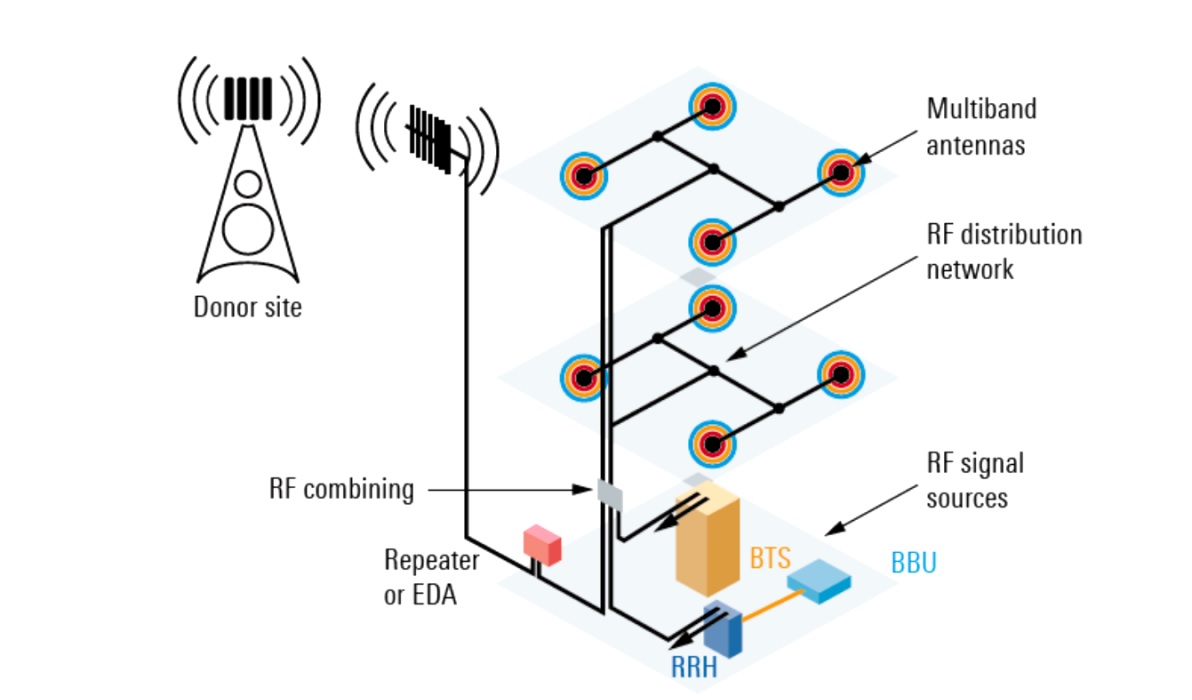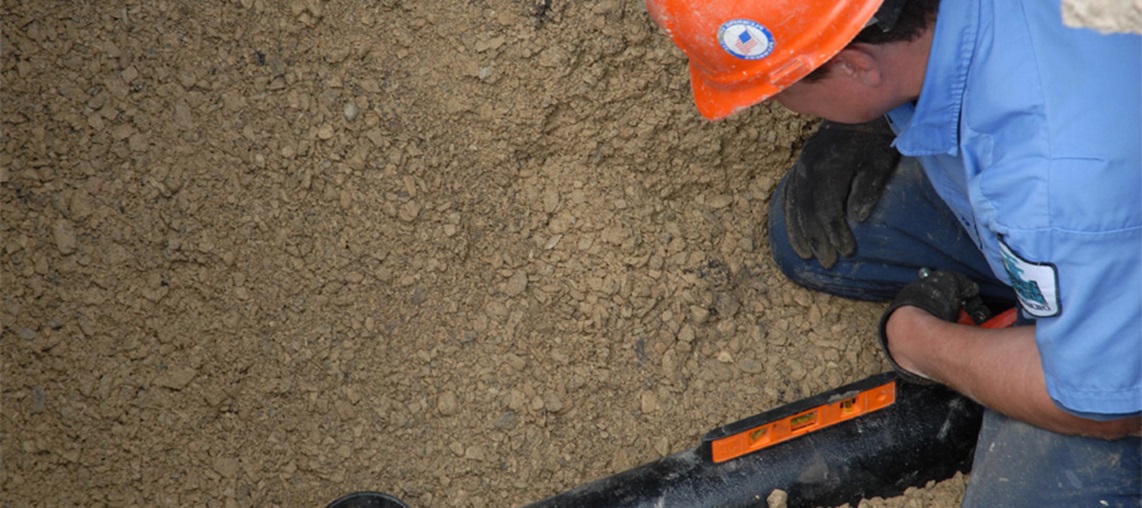A distributed antenna system (DAS) can be referred to as a link of antennas attached to a common source, distributed throughout construction, or an open space to improve the network performance. There should be spacing within the antennas to provide full coverage. This will also help reduce the number of antennas required to cover the entire building. A network of antennas is more power efficient as compared to a larger or single antenna covering a region. A DAS can be featured for use indoors and outdoors. It can also be used to provide wireless exposure in subways, airports, hospitals, roadway tunnels, and even hotels.
Some of the wireless services provided by DAS are PCS, WI-FI, police, fire, and emergency services. A DAS has two common features i.e. the signal source and the distribution system. The signal source is the input to any distributed antenna systems network. It can be located at the Base Transceiver Station (BTS). After the signal is received by the signal source, it needs to be distributed throughout the entire building. There are 4 major types of distribution systems. These systems are:
- Passive DAS. This form of distribution system uses passive RF components. RF components used in these systems are splitters, coaxial cables, tapers, and even coopers. These components distribute signals within a building. Feeder cables are used to supply wireless signals. The cables will play the role of antennas to distribute the signal in the building.
- Active DAS. This form of distribution system transforms the analog RF signal into a digital signal for distribution purposes. A master unit is used during this process to convert the analog signal into a digital signal for distribution. Once the conversion is complete, the digital signal is transferred to the Ethernet cables via fiber optic. The antenna systems receive the signal from the Ethernet cables and convert it back into an analog signal which is then transmitted to the entire building.
- Hybrid DAS. This form of distribution system uses coaxial cable and fiber optic cables to transmit the signal in the entire building. In this model, the analog RF signal obtained from the source is transformed into a digital signal for circulation purposes. The digital signal is delivered through fiber optic or the Ethernet cable to a Remote Radio Head (RRU). The RRU is mounted on every floor of a building. The RRU will then transform the digital signal into an analog RF signal. The analog signal is later transformed into innumerable antennas on the floors installed with coaxial cables or other passive components.
- Digital DAS. This form of distribution operates on the principle of Common Public Radio Interface (CPRI) specification. The CPRI enables the baseband unit (BBU) to connect directly with the DAS master unit and to the remote units with any transformation into an analog RF interface. Some of the advantages of DAS are:
- It has fewer coverage holes
- Well defined coverage
- Provides the same coverage while using less overall power
The disadvantages of DAS are
- The additional infrastructure required increases the overall cost.
- Greater visual of some applications although they are more likely to be small. This can be caused by the use of many antennas.
Hereby are some of the benefits of DAS
1. Improved WI-FI connectivity
Many buildings provide WI-FI but some structures may be disrupted by bandwidth limitations when many individuals are using the WI-FI. WI-FI connection does not have a limit on how many users can use it. Mounting a distributed antenna system helps solve this issue. This is because the antenna adds both coverage and capacity. DAS has a restricted volume of bandwidth, but every apportioned DAS user will have a connection to the network. This will result in better exposure compared to WI-FI low connectivity as a result of over-usage issues.
2. Indoor and outdoor exposure
Mounting a distributed antenna system with microwave radio equipment will help transmit the signal both indoors and outdoors. Connectivity and coverage levels need to be effective. DAS can greatly help in enhancing in-building communications for constant connectivity.
3. Increased efficiency
A DAS system will greatly help in enhancing communication and increasing coverage for all the company’s communications. The communication may include large meetings and conference calls. The DAS prevents distortions that may cause disconnection of the calls during the meeting. This will in turn increase efficiency as it will be easier to communicate with the employees without any barriers.
4. Strengthened cellular coverage
A DAS will cover the entire building. This helps in preventing poor cell signals, hence increasing overall capacity to ensure the clients receive a better online experience. Mounting a DAS in the business ensures every staff and client increases the accessibility of the signal making it easier to make phone calls. Phone calls can be made more effectively without any disruptions.
5. Cost-effective
DAS normally uses multiple lower-power antennas. This implies that you will consume less energy in your business, saving on costs. This will in turn save a lot of money because the cost of operations will be greatly reduced.
DAS plays a vital role in reducing cellular connectivity problems. This is through the enhancement of cellular signals. The cellular signals are transmitted through the installation of antennas in buildings. The antennas can be mounted both inside and outside the building. If the installation is done outside, the antennas can be placed on the roof or near a window to transmit the signal inside. The interior antennas can be placed on the wall or the ceiling to diffuse the signal inside the house. The DAS technology is suitable for every type of business you are operating. Businesses can use the DAS not only for cellphone signals but also for WI-FI hotspots and wireless internet. The internet connection will always be accessible whenever the employee requires it.
The connectivity of the internet through DAS is possible regardless of where you live. Innumerable companies can provide DAS solutions. However, careful considerations should be made to ensure you receive the best services. You should consider getting the services from a service provider. You can search for the best dealers and then make arrangements for how they will install the antennas, either at your workplace or in your house.
Wrapping up
In conclusion, many benefits come along with DAS. The above article has illustrated some of the examples and benefits of DAS.














